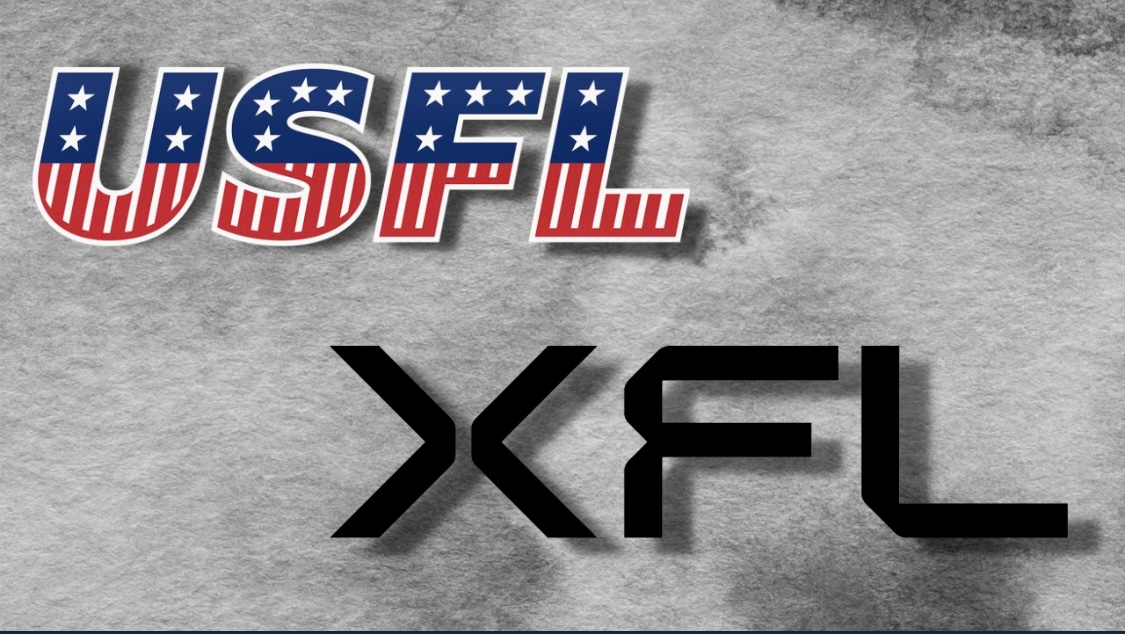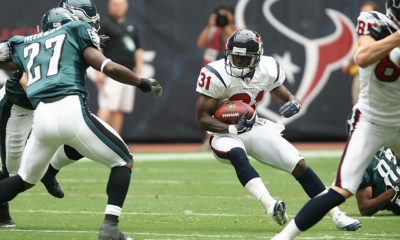
Key Points – XFL Rules Extra Points
- Tiered extra points are back with three run/pass-only options for extra points.
- Game timing is different between the two leagues, particularly concerning the play clock.
- Unique kickoff rules in both leagues point to differing philosophies on player safety and game strategy.
As spring football fans eagerly await the merger of the XFL and the USFL, many are wondering what the “new” league will look like in terms of gameplay. Both leagues have their unique rule sets designed to enhance entertainment, speed up the game, and prioritize player safety.
With the merger on the horizon, it’s time to break down the specific rules from each league to understand what fans can expect when these two worlds collide. In this in-depth analysis, we’ll compare the extra point systems, game timing, kickoffs, and much more, as we anticipate the most exciting merger in spring football history.
The Impetus for Comparison: Upcoming Merger
The impending union of the XFL and the USFL has given rise to numerous speculations and questions, especially concerning the rules that will govern the merged league. Both leagues have been known for their innovation, with the XFL, for instance, gaining attention for its kickoff, and the USFL for its offensive-minded rules. This makes for an intriguing discussion about which set of rules would prevail or how a blend might look. Our analysis aims to make sense of these rules to offer fans a glimpse of what the future holds.
Who Will Head Officiating? Dean Blandino (XFL) vs. Mike Pereira (USFL)
In terms of officiating, both leagues have reputable names tied to their rule enforcement. The XFL had Dean Blandino, known for his transparent approach and experience as the NFL’s Vice President of Officiating. On the other hand, the USFL had Mike Pereira, another former NFL VP of Officiating, who has been a rules analyst for Fox Sports.
The decision to keep one over the other could significantly influence the merged league’s rulebook and how it’s interpreted on the field. Both bring a wealth of experience, but their philosophies might differ, setting the stage for one of the many fascinating decisions the merged league will have to make. Since the officiating community is small, they are also both close friends.
Extra Points: A Battle of Philosophies
The extra point system is one of the most distinct rule differences between the XFL and the USFL. The XFL has brought back its tiered extra point system, offering teams three run/pass-only options for extra points after a touchdown. Teams can go for one point from the 2-yard line, two points from the 5-yard line, or even three points from the 10-yard line. This system provides a plethora of strategic choices, making every post-touchdown scenario a game within a game.
The USFL, while also offering tiered extra points, takes a slightly different approach. Teams can opt for a one-point kick from the 15-yard line, a two-point conversion from the 2-yard line, or a three-point play from the 10-yard line.
Game Timing: The Clock’s Ticking Differently
One area where both leagues deviate significantly from each other is in their approach to game timing. The XFL employs a 35-second play clock, which begins immediately after the previous play concludes. This fast pace is designed to keep the game moving and enhance viewer engagement. Notably, the clock continues to run even after incomplete passes and plays that go out of bounds, up until the two-minute warning in either half. Post two-minute warning, the clock will stop following first downs, allowing for more strategic plays as teams fight against time.
In contrast, the USFL hasn’t provided extensive details about their play clock rules but based on historical data, the league traditionally followed a more standard approach akin to the NFL. The differences in game timing between the XFL and USFL will be one of the more nuanced yet impactful aspects of the merger, with each style offering its own set of pros and cons for both player performance and viewer experience.
Kickoffs: Where Strategy and Safety Meet
The way each league handles kickoffs offers another fascinating divergence. The XFL’s rules position teams just five yards apart, with the kicking team at the opponent’s 35-yard line and the return team at their 30-yard line. This rule is aimed at reducing high-speed collisions, therefore making the game safer for players. It also adds an interesting strategic layer to the game, as coaches must carefully consider their kickoff tactics.
The USFL also has specific rules designed to promote safety and strategy in kickoffs. For instance, the receiving team must have a minimum of eight players in the set-up zone between their 35- and 45-yard lines, ensuring more players are involved in blocking and tackling. This represents a differing philosophy in achieving the same ends: minimizing injuries while keeping the game engaging.
Options for Ball Retention: It’s Not Just About Onside Kicks
The XFL and the USFL both allow for alternative methods for a team to keep the ball after scoring, but they do so in unique ways. In the XFL, teams have two options: they can either go for a traditional onside kick at any point in the game or opt for a 4th and 15 conversion from their 25-yard line, but only in the 4th quarter.
The USFL provides a similar alternative to onside kicks but with a twist. Teams can attempt a 4th and 12 from their 33-yard line. The difference in yardage and field positioning may seem slight, but they hold strategic implications that can impact the game significantly, particularly in high-stakes situations.
The Double Forward Pass: A Playground for Offensive Creativity
Both leagues embrace the concept of the double forward pass behind the line of scrimmage, but their rules around it are not identical. The XFL allows for a second forward pass as long as the ball has not crossed the line of scrimmage, adding a new layer of strategy and surprise to the offense.
The USFL allows for two forward passes behind the line of scrimmage as well, opening up avenues for more complex plays and strategies. This rule emphasizes the offensive-centric nature of both leagues, catering to fans who love high-scoring, exciting games.
The Dawn of a New Football Era
As the merger between the XFL and the USFL inches closer, the harmonization of their rulebooks will undoubtedly be a focal point for discussions. Whether it’s the philosophy behind extra points, the intricacies of game timing, or the strategies employed during kickoffs, each league brings its own flavor to the table. And it’s this blending of styles and rules that promises to make the merged league not just a continuation of what came before, but a new entity altogether – one that could redefine how we enjoy spring football.
For ongoing coverage of the XFL and USFL merger and what it means for the future of spring football, stay tuned to XFL News Hub.
XFL & USFL Rule Differences
Extra Points
- XFL: Offers tiered extra points with run/pass only options at the 2, 5, and 10-yard lines for 1, 2, or 3 points respectively.
- USFL: Similar to XFL, but with the option to kick for 1 point from the 15-yard line.
Game Timing
- XFL: 35-second play clock, clock runs even after incomplete passes and out-of-bounds plays (except in last two minutes).
- USFL: Rules for play clock have not been extensively detailed but traditionally more aligned with NFL standards.
Kickoffs
- XFL: Teams are five yards apart during kickoffs, focusing on reducing high-speed collisions.
- USFL: Requires at least eight receiving team players in the set-up zone between the 35- and 45-yard lines.
Options to Keep Ball
- XFL: Offers traditional onside kick or 4th and 15 conversion from own 25-yard line in the 4th quarter.
- USFL: Offers traditional onside kick or 4th and 12 conversion from own 33-yard line.
Double Forward Pass
- XFL: Allows a second forward pass as long as the ball hasn’t crossed the line of scrimmage.
- USFL: Also allows double forward passes but only behind the line of scrimmage.
Overtime
- XFL: Alternating attempts from the opponent’s 5-yard line, three attempts per team or until a winner is decided.
- USFL: Best-of-3 shootout from the 2-yard line, sudden death if still tied after three possessions.
Instant Replay
- XFL: Centralized replay with all plays subject to review, head coach can challenge one ruling per game.
- USFL: Replay Command at FOX Sports Control Center makes all decisions, can overrule personal foul calls.
Defensive Pass Interference
- USFL: Penalty is a spot foul up to 15 yards, beyond that it’s a 15-yard penalty unless intentional.
Offensive Pass Interference
- USFL: No penalty for offensive pass interference if the pass does not cross the line of scrimmage.
These are the most notable differences, each contributing to the unique flavor of the respective leagues. The merger will undoubtedly bring interesting changes as they work to harmonize these rules.
Unleash the Action: Sign up for XFL Insider and Fuel Your Passion for Football!
Mark Perry, a devoted sports journalist and founder of XFL News Hub, has been a key figure in XFL coverage since its 2018 revival. Launching XFL News Hub soon after the league's return announcement, Mark has established the platform as a primary source for comprehensive XFL updates. Renowned for his in-depth knowledge and commitment to sports journalism, Mark actively engages the XFL community, welcoming interactions at mark.perry@xflnewshub.com.

USFL and XFL Merger: A Deep Dive into the Historic Collaboration
Latest Podcast
-


XFL Podcast
/ 1 year agoXFL-USFL Merger Insights: Houston’s Future, Draft News, Player Movement – Ep. 216
Welcome to Episode 216 of the “XFL Week In Review,” your premier destination for...
By Mark Perry







